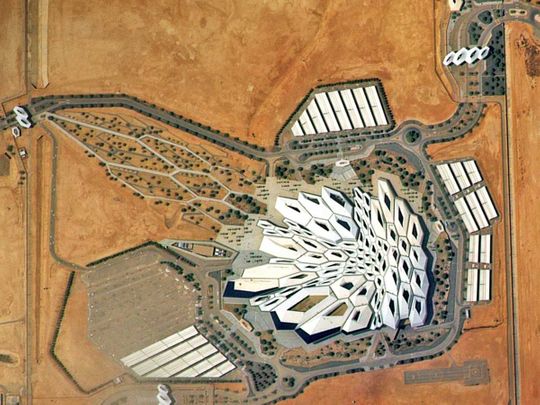
Dubai: The UAE’s first Emirati-made earth observation, KhalifaSat, sent a greeting to Saudi Arabia on the occasion of its 91st National Day with a stunning photo taken from outer space.
On Thursday, the Mohammed Bin Rashid Space Centre (MBRSC) shared on Twitter a photo of the beautiful architecture of the King Abdullah Petroleum Studies and Research Center (KAPSARC) in Riyadh taken by KhalifaSat from around 613km above Earth.
MBRSC tweeted: “Congratulations to the leadership and people of Saudi Arabia on the occasion of the 91st National Day. This photo, taken by #KhalifaSat, shows the beautiful architecture of the King Abdullah Petroleum Studies and Research Centre (KAPSARC) in Riyadh.”
KAPSARC is a non-profit institution founded by the Saudi Council of Ministers to advance studies of domestic and global energy challenges and opportunities. World-renowned Zaha Hadid Architects designed the 750,000 square foot environmental research campus for local and international researchers to explore the potential of effective and productive energy use.
Honeycomb formations
The photo tweeted by MBRSC shows KAPSARC’s hexagonal prismatic honeycomb structures designed for a desert environment. According to ZHA, “the self-shading courtyards, building shape, and orientation are intentionally designed to maximise natural daylight throughout the interiors. The idea of using geometric honeycomb formations is to soften the light and heat”.
UAE-made satellite
KhalifaSat, meanwhile, is the first entirely Emirati-made earth observation satellite that was launched into orbit from Japan’s Tanegashima Space Centre on October 30, 2018. It provides high-resolution images from a nominal altitude of 613km above Earth which are used for various objectives, including urban planning, monitoring of environmental changes and aiding rescuers in natural disasters.








